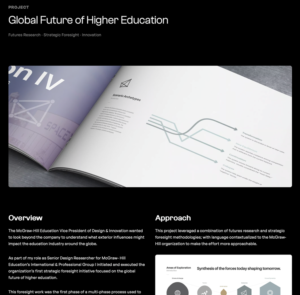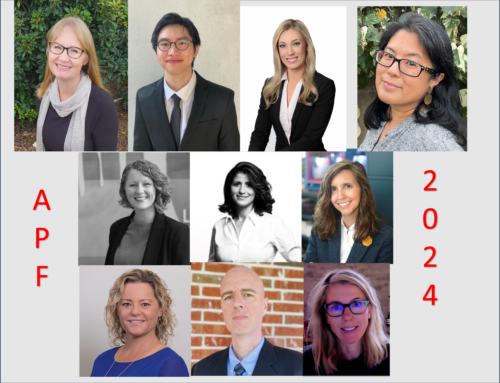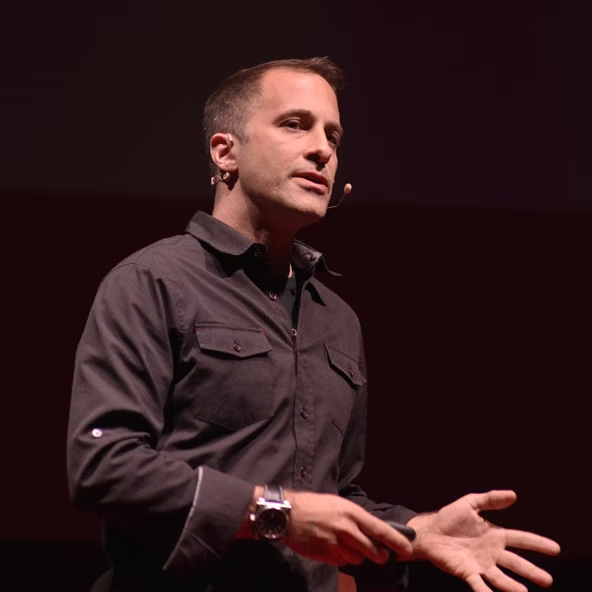Guest Contributor Joe Carpita

Joe Carpita is a Chicago-based foresight strategist & futures researcher. He specializes in helping organizations understand emerging change, envision alternative futures, and develop strategies that embrace ambiguity & mitigate risk. Joe is a graduate of the University of Houston Master’s of Foresight Program, and his vast strategy consulting experience includes leading strategic foresight engagements for top companies such as Samsung, McGraw-Hill Education, Cox, and Proctor & Gamble.
Interest in Foresight, as a discipline, has grown in popularity over the last few years since the increase of uncertainty associated with the COVID-19 outbreak in early 2020. With technology transforming the way we interact with the future and changing trends shaping our present, foresight practitioners have become more important than ever in guiding businesses & organizations towards success through resilient, forward thinking strategies. As foresight practitioners, it is our responsibility to ensure that the information provided to clients and decision-makers is comprehensive and of high quality. One effective way to achieve this is to begin sharing our work more publicly – something that seems to be a less common practice in the field of foresight (compared to something like design or software development, for example).
The Value of Sharing Process: Critique and Education
Publicly showcasing our work allows others to review and critique our analysis, methodology, and findings. This critical feedback helps us identify blind spots, validate assumptions, and improve the quality of our process and outputs. Additionally, by sharing our process publicly, we can educate others about foresight as a discipline, demystifying its complexities for both active project stakeholders and laypeople alike.
Designers across all disciplines (graphic, industrial, UX, etc.) have long embraced public facing portfolios showcasing work done for clients. This approach helps designers gain recognition, receive valuable feedback from peers, and improve the quality of their future designs. The designer’s portfolio has also long served as tool for proving capabilities and experience, and is an easy way to demonstrate that a designer can both talk the talk and walk the walk. Similarly, by sharing our foresight projects publicly, we can encourage a culture of learning and collaboration within the discipline; while also showing our bonafides in way that allows educated & experience foresight practitioners to show they’re more than pop futurists or someone who just uses the title because they think it sounds dynamic.
Pushing the Quality of Futures Work Further
When we share our work publicly, we invite other foresight practitioners to challenge and critique our ideas. While this might give man unfamiliar with the process of critique, this healthy competition leads to better quality processes, outputs & deliverables, and ultimately helps us push the boundaries of foresight as a practice. By openly sharing and discussing our work with others, we create opportunities for learning from each other’s experiences, which in turn strengthens the entire discipline.
Moreover, publicly sharing our work can also help attract new interest in the field both from potential clients and new talent. Potential clients always want to see examples of previous projects which help alleviate any concerns about unfamiliar processes (which foresight projects usually fall under). And, young professionals are more likely to be inspired by the work of their peers and be motivated to contribute to the foresight practice. This influx of fresh ideas and perspectives can lead to innovative solutions that might not have been possible otherwise.
The Challenges of Public Sharing
Despite these benefits, there are challenges to sharing our work publicly. Beyond the obvious concerns over confidentiality, it requires individual vulnerability, as we expose ourselves to criticism and scrutiny. Additionally, it takes time and effort to prepare reports or presentations for public consumption. However, the potential rewards far outweigh the challenges. By embracing more public sharing of work-in-progress, raw data, hard deliverables, and polished case studies, we can foster a more collaborative and critical foresight practice, ultimately benefiting both our clients and the discipline itself.
Conclusion: Embracing Public Sharing for Better Foresight Practice
Foresight practitioners play a crucial role in helping businesses navigate through uncertainty and make informed decisions about their future. By embracing public sharing of our work, we create an environment that encourages learning, collaboration, and improvement. This not only leads to better quality processes and work, but also helps push the boundaries of foresight practice further. So let’s embrace the power of sharing and use it as a tool for growth and development in this ever-changing world. I’ll even go first! Feel free to look at my project from the University of Houston on the Future of DAOs which exists very publicly as a polished case study on my personal portfolio site, the final report itself which exists as a Discord server, and as a Miro board which offers a behind-the-scenes look at the process used for the project.
Image:

A screenshot of a case study from my own personal site joecarpita.com. Additional case studies and full project outputs can be found on this site.





